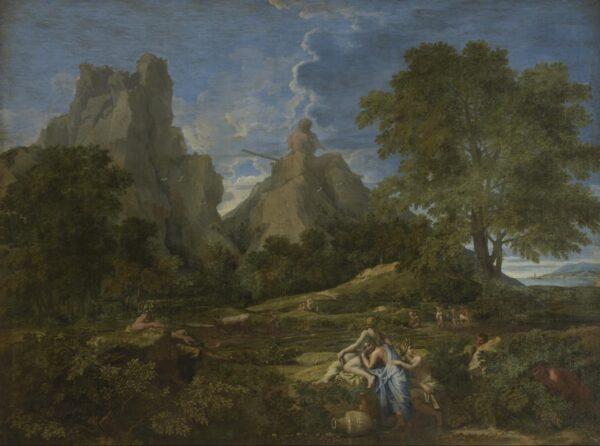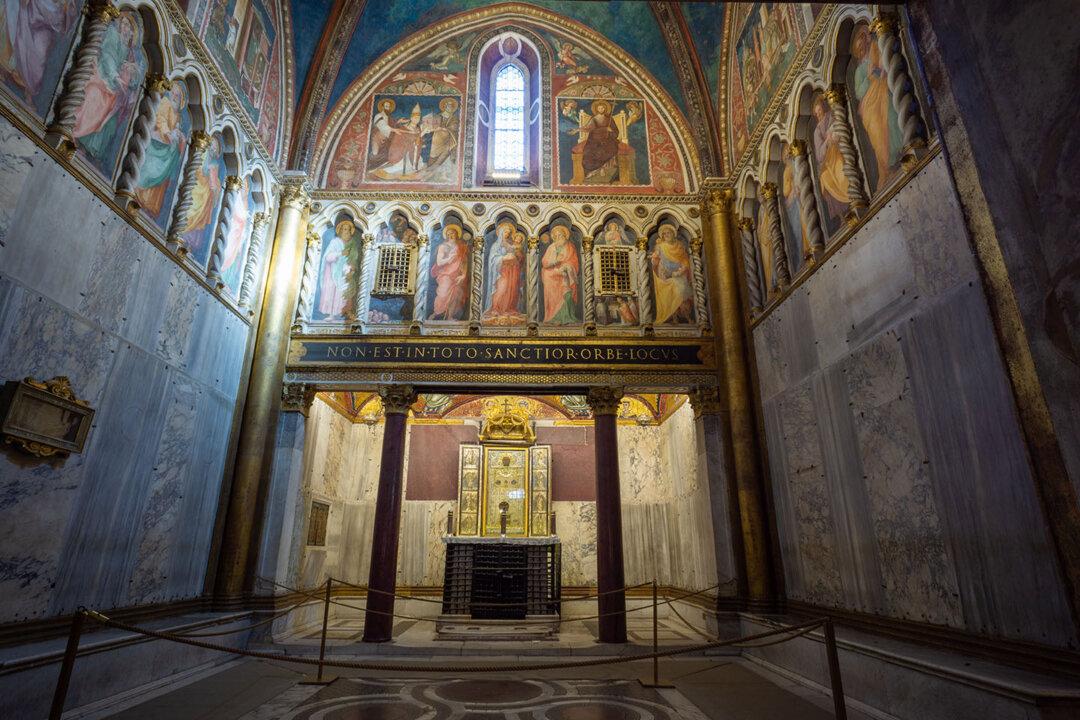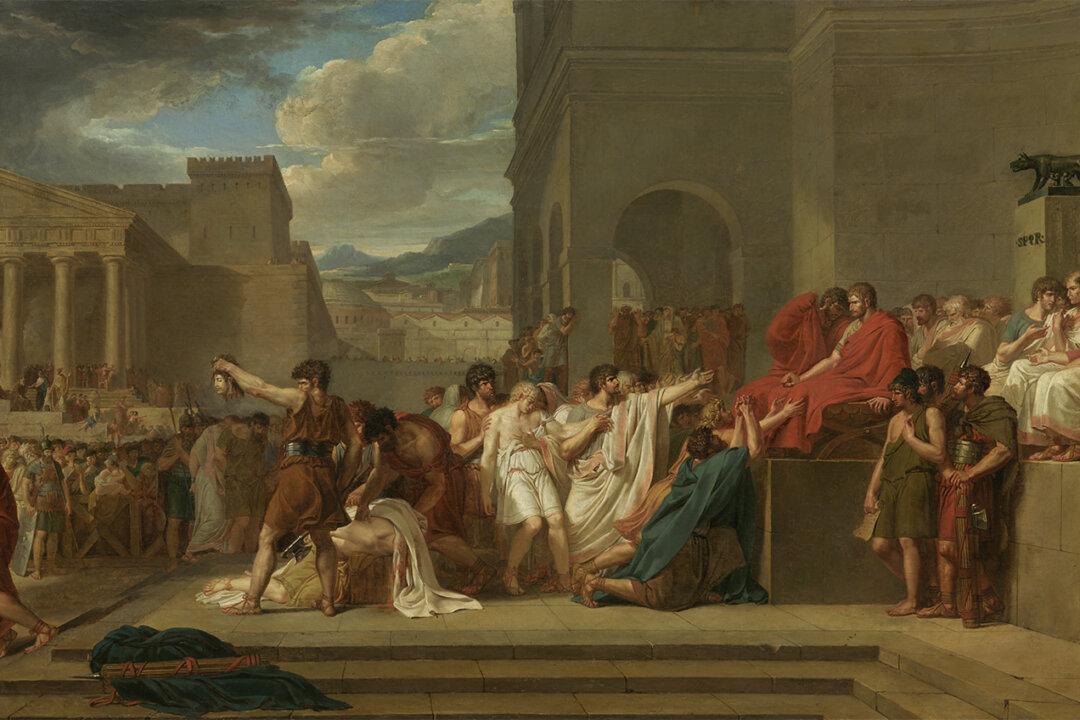Sitting on a high rock, he would sing as he gazed out to sea. ... In this way Polyphemus shepherded his love with singing. —Theocritus, “Idyll XI,” trans. Neil HopkinsonSerenity rules over the meadows, peace over the sea. Clouds part as white gulls hover among rocky peaks and rich leaves. It’s in this bucolic landscape on a monumental canvas that Nicolas Poussin has set his human and demigod figures. Having spent decades of his career between Paris and Rome, the 57-year-old artist had successfully established himself as the premier painter of his age, successor to the great Italian masters of the Renaissance.

"Landscape with Polyphemus," c. 1649, by Nicolas Poussin. Oil on canvas, 59 inches by 77.9 inches. Hermitage Museum, Saint Petersburg. Public Domain





